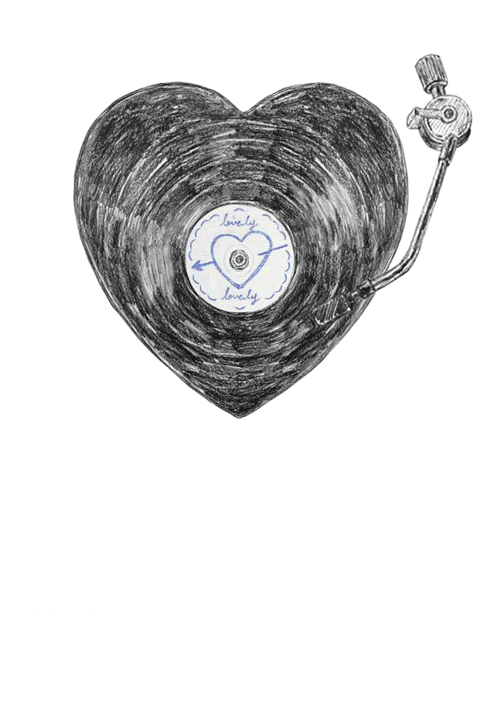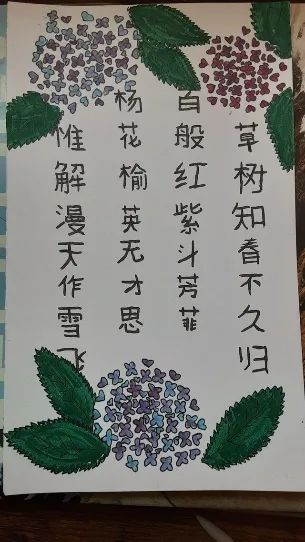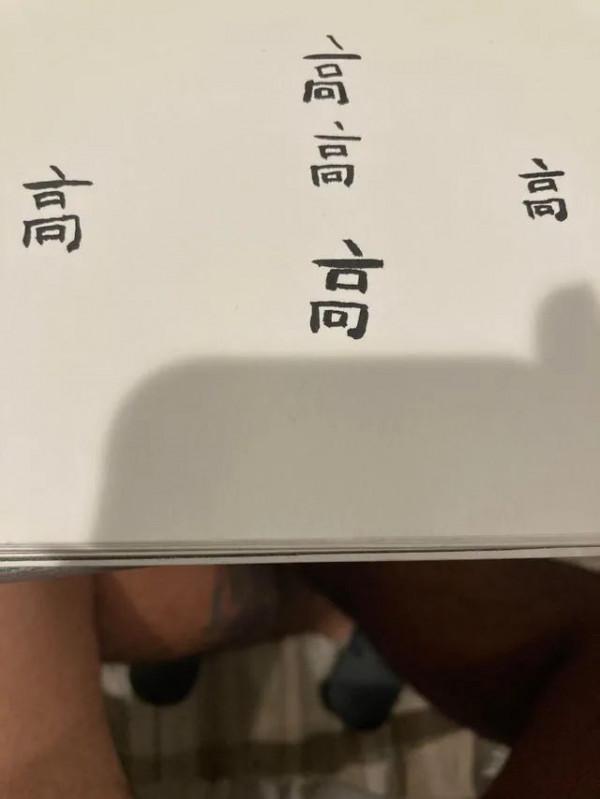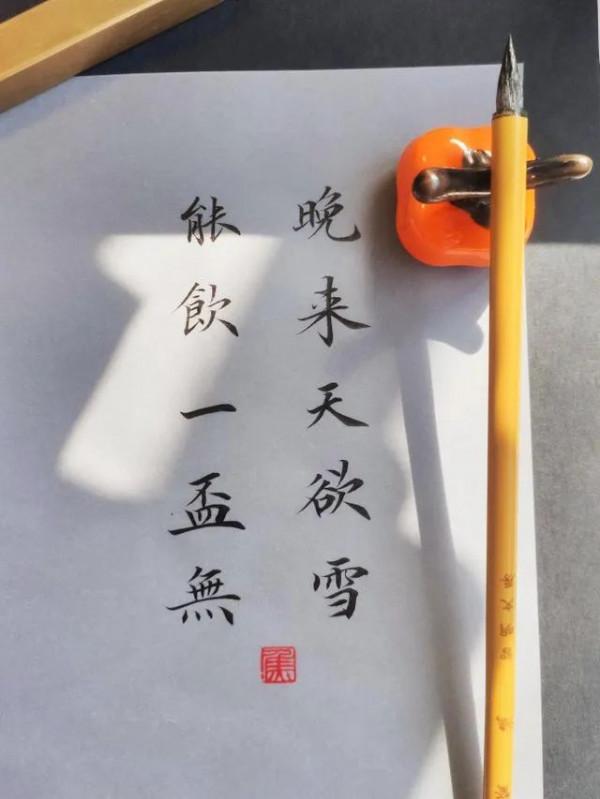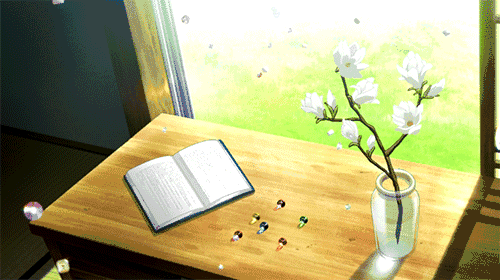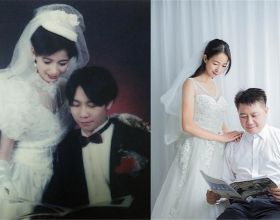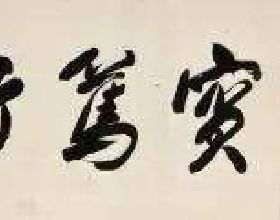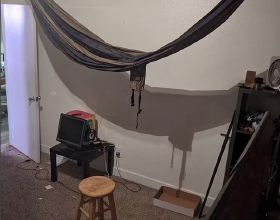隨手一翻就能看到不少中文學習的記錄,例如下面這個漢字書寫練習。
彷彿看到了自己小學時代的作業本。
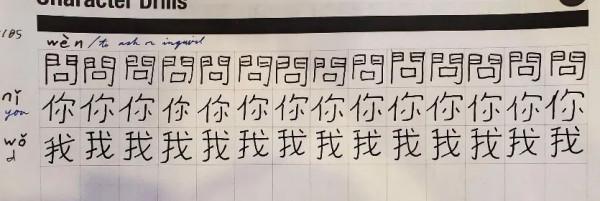
Hi, I'm quite new to Mandarin and am starting to work on my characters. I suspect they look like a 4-year-old wrote them, so I would appreciate advice/observations in general or specifically about these ones. Thank you!
嗨,我中文是新手水平,剛開始學寫漢字。我估計我寫得有點像4歲小孩的字跡。有什麼漢字書寫的建議或者能不能告訴我這些字寫得怎麼樣,感恩。
還有人曬出自己學習中文時抄寫的韓愈的古詩《晚春》。
字型方正,筆畫稚嫩,筆觸裡處處用勁兒。
Keep the four sentences in line! The top two characters make it seem that the title of the poem is 百楊. And one of them is wrong. It's 楊花榆莢無才思, it's 莢 not 英.
四列字要對齊!上面突出的兩個字像是這首詩的標題“百楊”。而且有個字寫錯了,是楊花榆莢無才思,是莢,不是“英”。
還有不少字帖本上的單字練習,發到網上來就為了求個點贊。

You guys are here with your calligraphy, this is my stuff up on writing 你. I'm getting there slowly though haha.
你們都在曬書法,這是我寫的“你”字。慢慢進步中哈哈。
我寫的“高”。
也有典型的字兒還沒寫方正就開始嘗試連筆了的。
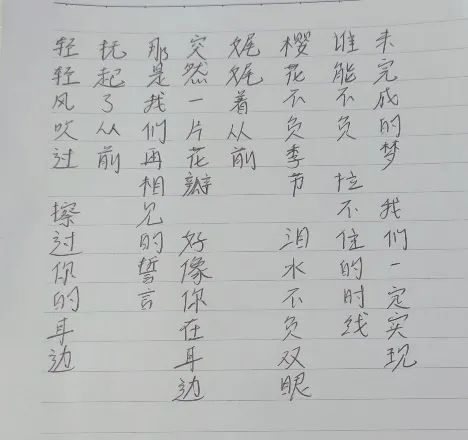
Trying out a semi-calligraphic(?) handwriting, critic needed!
試著寫一下半書法體。請指正!
社群氛圍十分好,有人曬出好看的書法,底下評論就充滿了學習熱情。
My god it should be illegal for something to look this amazing, truly inspiring. This inspires me to continue studying Chinese and its characters. Thank you so much my friend.
天哪,這麼美的字是我能看的嗎!太鼓舞人了。我又有動力學習中文和漢字了。十分感謝。
從上面稚嫩的書法裡可以看出,中文確實不好學。
為外交人員提供培訓的美國國務院外事服務局(Foreign Service Institute)在官網上有一個根據70年來的培訓資料整理的外語難度榜單。
中文(含普通話與粵語)位列最難的第四級。
排名的依據就是“該語言的水平達到勝任工作(Professional Working Proficiency)所需要的學習時長”。
第一級
約24-30周(600到750課時)
Danish, Dutch, French, Italian and Spanish
丹麥語、荷蘭語、法語、義大利語、西班牙語
These are languages that are more similar to English.
這些語言跟英語很相似。
第二級
約36周(900課時)
German, Malay and Swahili
德語、馬來語、斯瓦西里語
第三級
約44周(1100課時)
Greek, Hebrew, Hindi, Russian, Thai and Vietnamese
希臘語、希伯來語、印地語、俄語、泰語、越南語
These are “hard languages” – languages with significant linguistic and/or cultural differences from English.
這些就是“難學的語言”——語言上和文化上都與英語有顯著不同。
第四級
約88周(2200課時)
Arabic, Chinese (icld: Mandarin, Cantonese), Japanese and Korean
阿拉伯語、中文(含普通話與粵語)、日語、韓語
These are “super-hard languages” – languages which are exceptionally difficult for native English speakers.
這些就是“超級難學的語言”了——對於英語母語者來說格外難。
網上也有眾多大小榜單把普通話列為最難學的語言。
羅列的理由大致相似:
❶ It has four tones which are not present in non-tonal languages.
普通話有著非聲調語言沒有的4個聲調。
❷ Its grammar is hard to grasp. e.g., it’s hard to distinguish 了 and 過 when you express the meaning of “completed”.
普通話的語法很難掌握,如:想要表達“完成”的意思,很難分辨是用“了”還是“過”。
❸ You have to memorize a lot of radicals to be able to recognize characters composed by them.
你得記憶很多偏旁部首才能辨認由它們組成的漢字。
不過,其中提到的記憶偏旁部首,或許是真的有助於閱讀能力的提升。
約翰霍普金斯大學的研究顯示,比起看影片學習和打字練習,手寫語言符號能更好地幫助學習者學會認字和其他相關的能力。
Hand-writing letters more effectively teaches reading skills compared to typing and watching videos. Participants who received hand-writing training are more able to recognize the Arabic letters, write with them, use them to spell new words, and use them to read unfamiliar words than the other two groups that only practiced letters in typing or watching video clips respectively.
與打字和看影片學習相比,手寫字母能更有效地訓練閱讀技能。接受手寫訓練的受試者比僅在打字或觀看影片片段時練習字母的其他兩組受試者更能識別阿拉伯字母、用字母書寫、拼寫生詞,以及閱讀不熟悉的單詞。
這樣看來,比起電子裝置充斥的課堂,語文課裡從不缺席的認字、抄字、練字環節還是十分有益處的。所以即便很困難,網友們還是興致高昂地練著漢字書法。
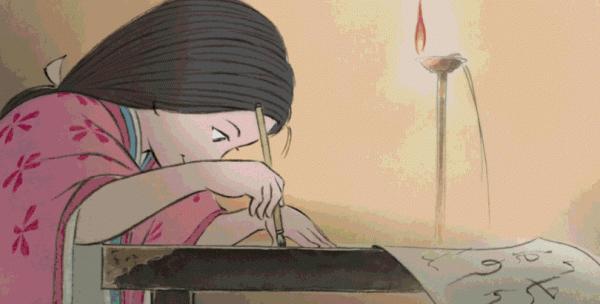
漢學家、語言學家David Moser早就在文章中提醒過學習者們,中文的書寫系統不是一般的難。
What does it take for a person to master the Chinese writing system? There is nothing that corresponds to an alphabet, though there are recurring components that make up the characters. How many such components are there? Don't ask. As with all such questions about Chinese, the answer is very messy. And how are these components combined to form characters? Well, you name it -- components to the left of other components, to the right of other components, on top of other components, surrounding other components, inside of other components -- almost anything is possible.
要掌握中文書寫系統需要什麼呢?完全沒有和字母對應的東西,雖然漢字裡會重複出現一些構件。這些構件有多少個?別問我。就跟所有關於中文的問題一樣,這個問題的答案也是繁複而無跡可尋。那麼,這些構件如何組成漢字呢?啊,數不勝數,可以從左到右加到別的構件身上,也可以從右至左,或者從上到下,或者包圍起別的構件,或者鑽進別的構件裡……怎樣都有可能。
And in the process of making these spatial accommodations, these components get flattened, stretched, squashed, and shortened in order to fit in the uniform square space that all characters are supposed to fit into. In other words, the components of Chinese characters are arrayed in two dimensions, rather than in the one-dimensional rows of alphabetic writing.
而在這些空間組合過程中,這些構件們或變平,或延伸,或壓扁,或縮短,一直到能夠符合所有漢字應滿足的方塊區域為止。換句話說,中文漢字的構件們是在二維上排列,而不是字母系統的一維。
Another problem with looking up words in the dictionary has to do with the nature of written Chinese. In Chinese there are spaces between characters, but it takes quite a lot of knowledge of the language and often some genuine sleuth work to tell where word boundaries lie; thus it's often trial and error to look up a word. It would be as if English were written thus:
查字典還有一個問題來自中文漢字本身的特性。在中文裡呢,漢字之間有空格,但是得需要好多中文知識和真正的偵探本領才能讓你找出詞彙之間的界限。所以找一個詞兒往往是個試錯過程。就好象英文寫成如下的樣子:
FEAR LESS LY OUT SPOKE N BUT SOME WHAT HUMOR LESS NEW ENG LAND BORN LEAD ACT OR GEORGE MICHAEL SON EX PRESS ED OUT RAGE TO DAY
還有文言文,連Moser本人說起來都唉聲嘆氣。
Then there's classical Chinese (wenyanwen).
然後還有個文言文……
Forget it. Way too difficult. If you think that after three or four years of study you'll be breezing through Confucius and Mencius in the way third-year French students at a comparable level are reading Diderot and Voltaire, you're sadly mistaken. There are some westerners who can comfortably read classical Chinese, but most of them have a lot of gray hair or at least tenure.
放棄吧。太難了。如果你以為三四年學習之後就能輕鬆翻閱孔孟的文章,就好像水平相當的三年級法文學習者能夠閱讀狄德羅和伏爾泰那樣,那你就大錯特錯。的確有一些西方人能夠順暢地閱讀文言文,不過他們大都頭髮花白,或至少有教授頭銜……
“It's Greek to me.”
“這對我來說就像希臘文。”
法語裡會說:
“C'est du chinois.”
“這是中文。”
中文裡卻會說:
“跟天書一樣。”
"It's like heavenly script."
你覺得還有什麼語言難如天書呢?
這裡是中國日報雙語新聞夜聽雙語,我是雙語君。
晚安,好夢。
breeze through sth 輕易透過;輕鬆完成
radical [ˈrædɪkl] n 偏旁;部首
編輯:左卓
來源:Foreign Service Institute - United States Department of State; Reddit
China Daily精讀計劃來了!
每天20分鐘,
帶你學英語,看世界!

